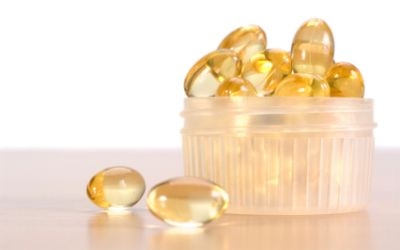May 27, 2011

Traditionally and historically, edible oils have normally been sold using the area percent (AP) basis for calculation. Most bulk oils are still sold this way. Some analytical methods, such as AP, date from when analytical chemistry was limited to more simple gravimetric and volumetric measurements. This includes animal (and fish) oils and vegetable oils. Examples include: Fish Oil TG (18/12), Flaxseed Oil (55 percent ALA), Borage Oil (20 percent GLA), Evening Primrose Oil (9 percent GLA), etc. The amount of these specific claimed fatty acids are normally determined by AP, not mg/g. The problem becomes apparent when testing a finished product is done. The AP and weight percent (WP) testing results are clearly different. One needs to be aware of the differences, especially when labeling an oil product, such as a softgel.
Methodologies & Reporting
The determination of fatty acids is carried out worldwide to obtain direct information regarding the fat composition of various foods and compounds. The analysis of a fatty-acid profile is generally performed using the American Oil Chemists' Society (AOCS) or other official methods on gas liquid chromatography (called either GLC or GC) equipment, following the conversion of the fatty acids into their corresponding methyl esters (FAME). (Figure 1)
While AP and WP can both be used to analyze the fatty acid content of oils, they are not the same thing. AP is the simplest quantitative method. This method assumes the detector responds identically to all compounds. This assumption, however, is not entirely accurate. This method provides a rough estimate of the amounts of analytes present. This method excludes non-fatty acid components (e.g., the glycerol backbone and unsaponifiable matter in the oil), which accounts for 5 percent to 15 percent of the total.
In contrast, WP is a quantitative result that takes into account the weight of the fatty acids plus glycerol backbone and unsaponifiable matter. The WP of each fatty acid is compared to the overall weight of the oil (mg/g) or a standard. (Figure 2)
Quantification of fatty-acid data requires understanding the conversion factors in data calculation. A rough conversion factor between area percent and mg/g is 0.90. This represents approximately a 10-percent difference between the two, but this depends upon the oil, free fatty acids (FFAs), method and equipment used.
Labeling Concerns
The Dietary Supplement Health and Education Act of 1994 (DSHEA) enacted significant changes to dietary supplement labeling. First, the label of a dietary supplement must list the name of each ingredient and the quantity of such ingredient. Second, the label must bear the term dietary supplement. Finally, if the dietary supplement is covered by the specifications of an official compendium, it must meet these specifications if the dietary supplement represents that it conforms to such specifications. If the dietary supplement is not covered by an official compendium, it must contain the identity and strength it is represented to have, and it must contain the quality, purity and compositional specifications it is represented to have.
Lack of standardization exists in labeling due to these two differences. Proper labeling depends upon identifying which method was used. When no mention of method is used, it is presumed to mean mg/g, because X mg is a specific amount of material, not a percentage. So, to label a product claiming X mg using an AP basis would be incorrect per DSHEA. Most oil products being sold are still being sold today utilizing AP calculation and are labeled incorrectly.
The result can be slightly different, if expressed as the FFA, triglyceride or ethyl ester forms of the oil. For labeling uniformity, the Council for Responsible Nutrition (CRN) recommends listing the individual contents as FFA equivalents. This is similar to reporting elemental content of vitamin or mineral compounds (same as mg/g).
Some companies are now selling and labeling oils with a disclaimer: Claim based on analysis by area percent or as ethyl esters. This is also technically correct, because it defines the method of analysis being used for the claim. Here is an example of what such a supplement fact label looks like:
In order to correctly label the bulk or finished product, one must decide which way to label itas mg/g or AP (with disclaimer). Most analytical labs report as mg/g for fatty acids. This may potentially create an issue between the manufacturer and the selleron label claims. As the popularity of nutritional oils increase, suppliers and manufacturers must be aware of the differences between AP and WP results and label their products accordingly.
Robin Koon, senior vice president at Best Formulations , has more than 25 years of pharmaceutical experience in clinical pharmacy and as a drug chain executive overseeing operations and managed-care, and in retail mass market.
About the Author(s)
You May Also Like




.png?width=800&auto=webp&quality=80&disable=upscale)